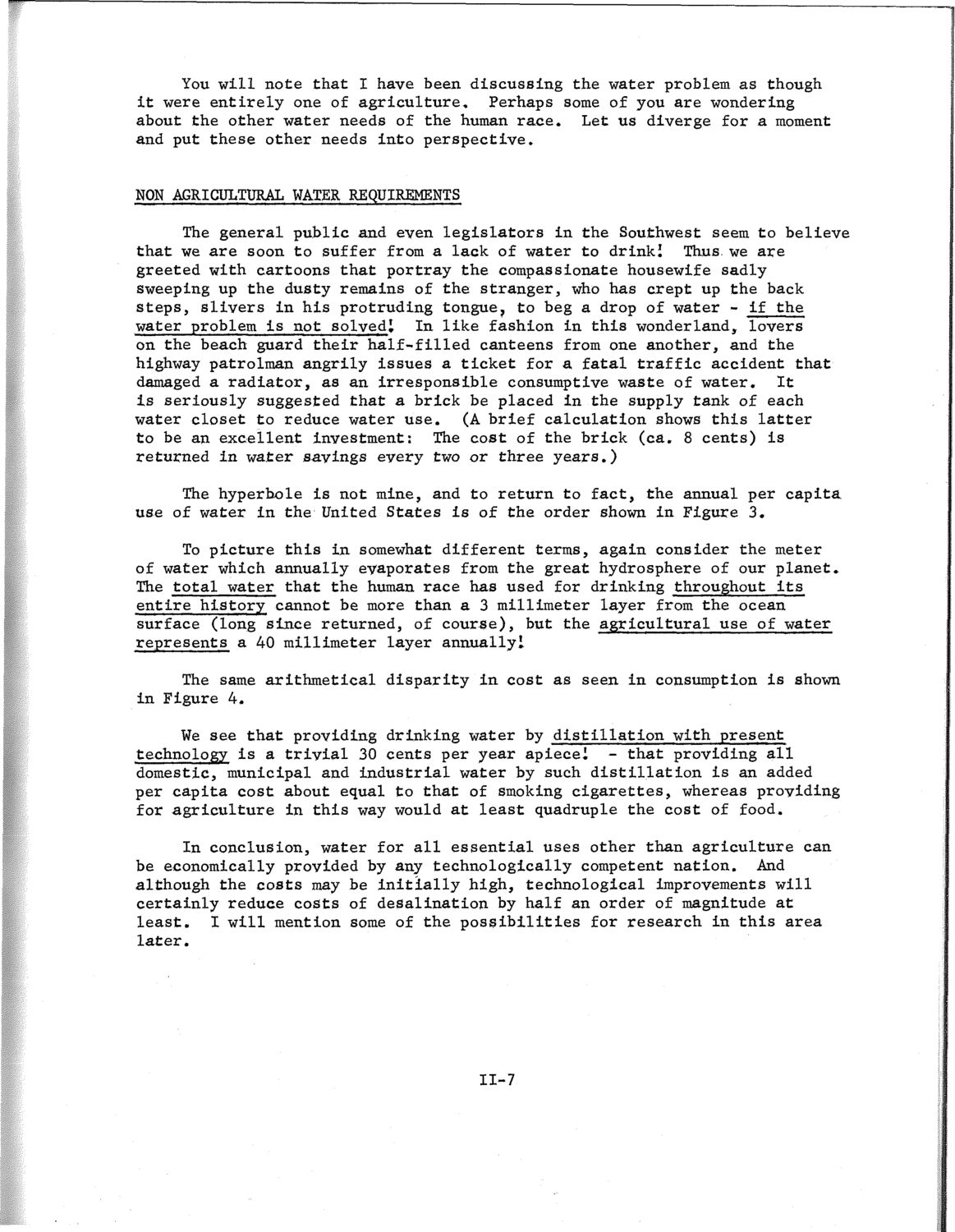| |
| |
Caption: SWE - Proceedings of the First International Conference of Women Engineers and Scientists
This is a reduced-resolution page image for fast online browsing.

EXTRACTED TEXT FROM PAGE:
You will note that I have been discussing the water problem as though it were entirely one of agriculture. Perhaps some of you are wondering about the other water needs of the human race. Let us diverge for a moment and put these other needs into perspective. NON AGRICULTURAL WATER REQUIREMENTS The general public and even legislators in the Southwest seem to believe that we are soon to suffer from a lack of water to drink! Thus, we are greeted with cartoons that portray the compassionate housewife sadly sweeping up the dusty remains of the stranger, who has crept up the back steps, slivers in his protruding tongue, to beg a drop of water - if the water problem is not solved! In like fashion in this wonderland, lovers on the beach guard their half-filled canteens from one another, and the highway patrolman angrily issues a ticket for a fatal traffic accident that damaged a radiator, as an irresponsible consumptive waste of water. It is seriously suggested that a brick be placed in the supply tank of each water closet to reduce water use. (A brief calculation shows this latter to be an excellent investment: The cost of the brick (ca. 8 cents) is returned in water savings every two or three years.) The hyperbole is not mine, and to return to fact, the annual per capita use of water in the United States is of the order shown in Figure 3. To picture this in somewhat different terms, again consider the meter of water which annually evaporates from the great hydrosphere of our planet. The total water that the human race has used for drinking throughout its entire history cannot be more than a 3 millimeter layer from the ocean surface (long since returned, of course), but the agricultural use of water represents a 40 millimeter layer annually! The same arithmetical disparity in cost as seen in consumption is shown in Figure 4. We see that providing drinking water by distillation with present technology is a trivial 30 cents per year apiece! - that providing all domestic, municipal and industrial water by such distillation is an added per capita cost about equal to that of smoking cigarettes, whereas providing for agriculture in this way would at least quadruple the cost of food. In conclusion, water for all essential uses other than agriculture can be economically provided by any technologically competent nation. And although the costs may be initially high, technological improvements will certainly reduce costs of desalination by half an order of magnitude at least. I will mention some of the possibilities for research in this area later. II-7
| |